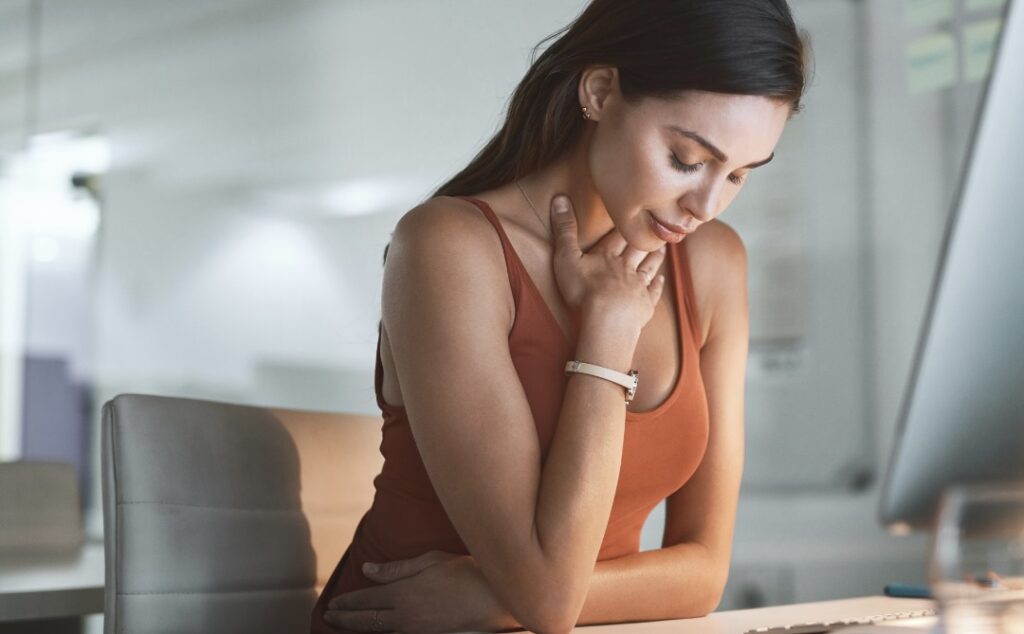Will Meditation Help my Anxiety?
Are you looking for a quick-fix for your anxiety? Or something to help in the long-term?
I used to see meditation as a quick-fix coping mechanism.
Sitting down to meditate helped calm my mind.

But actually, the benefits of meditation can be felt beyond those moments on the cushion.
Meditation can help us develop coping strategies to control anxiety in our everyday lives.
Here’s a meditation practice which works as a “quick fix” but can also help in the long-term.
The Meditation Practice: Observation of Anxiety
Make sure you’re sitting comfortably and settle into your meditation practice with a few deep breaths or a body scan.
(Not sure what a body scan is? Download my free guide to meditation which will take you through the steps: subscribepage.io/seedsofzen.)
Now, turn to the physical sensations of your anxiety.
Where in the body does it appear? Your belly? Your chest?

How does it feel? Perhaps there’s a tingling? Or a tightness? Do those feelings change over time? How so?
Don’t worry if this takes a bit of getting used to. We so often label our feelings without noticing how the feeling actually… well… “feels”.
Just be curious and stay with your experience.
Remember, you’re not trying to get rid of your anxiety, or to run away from your anxiety – you’re simply holding it with an awareness of the physical sensations.
The “Quick Fix” – How this Meditation Helps on the Cushion
1 – Your anxiety feels less overwhelming
Treating anxiety as something felt in the body, rather than something experienced in the mind is empowering.
You can almost view your anxiety as you would view a cramp in your leg – an unpleasant and annoying feeling, but one you know will pass.

It makes anxiety seem less overwhelming. It feels easier to overcome.
2 – The anxiety passes
As you focus on the physical sensations of anxiety, notice how they gradually weaken.
Perhaps your shoulders drop, or your jaw relaxes, or the tingling sensations fade away.
Your body is constantly sending messages to your brain. And so, as the physical sensations of anxiety pass, and your body relaxes, this sends a signal to your mind that it can calm down too.
Long-Term Coping Strategies – How this Meditation Helps in Everyday Life
1 – You stop anxiety spiralling out of control
By meditating on the physical sensations of anxiety they will become more familiar to you – and that makes it easier to spot them crop up in your everyday life.
You can see them as red flags that anxiety is on its way.

And just like you would with a cold, you nip it in the bud.
Even if you’re in the middle of a busy day, a simple breathing exercise can help stop the anxiety from spiralling out of control.
2 – Fewer knee jerk reactions
This meditation practice asks you to let your anxiety be – you aren’t trying to fight it or push against it… you just sit with it.
You can use this approach in your everyday life too.
Rather than fighting against anxiety – or the situation causing anxiety – simply let it be.

Firstly, this stops it from getting any worse – fighting anxiety only adds fuel to the fire!
But it also creates a gap between the trigger of your anxiety and your response to it – it prevents knee jerk reactions.
3 – You remember the anxiety will pass
During your meditation practice, you noticed the physical sensations of anxiety gradually weaken.
Remind yourself of this experience whenever you feel particularly overwhelmed – remind yourself that the anxiety can and will pass.
You could even do an “on the go” mini-version of the meditation. Sometimes at my desk I take a few moments to drop into my body, feel the anxiety and watch it weaken and pass.

You don’t have Anxiety
Perhaps the most powerful thing about this meditation is that it creates a distance between you and anxiety.
It shows you that anxiety is not a permanent part of who you are. It’s just something you sometimes feel.
So next time you spot yourself saying “I have anxiety”, catch yourself.
Try “Sometimes I feel anxious” instead.
